READER COMMENTS ON
"Why the Holt Election Reform Bill Must be Amended to Guarantee a Real Paper Ballot"
(26 Responses so far...)
COMMENT #1 [Permalink]
...
Paul Lehto
said on 2/6/2007 @ 4:54 pm PT...
Calling the same old same old paper records "ballots" would be a deceptive and fraudulent practice on consumers because the average reasonable person WOULD THINK that a "ballot" would get counted in the first count, on election night. Nope. Wait, voters are consumers too! No wait, we're in charge --- We the People --- and this is what we GET??
Holt only makes sense as a response to evoting, right, but within the world of e-voting:
(1) Paper "ballots" (records, whatever) NEVER get counted on the first count.
(2) If an automatic state machine recount is triggered based on a percentage margin, Holt Audit provisions do not apply and the machine recount just reprints the DRE totals (for DREs) and uses the same fraudulent programming for opscan recounts...
So paper ballots don't EVER get counted under Holt II, but only if you're in a close race. Or if it's a corrupt state with only machine recounts because state law trumps Holt then, according to Holt.
When it really matters, Holt fails, in other words.
here's section 327:
‘‘SEC. 327. EXCEPTION FOR ELECTIONS SUBJECT TO AUTO2
MATIC RECOUNT UNDER STATE LAW.
‘‘This subtitle does not apply to any election for
which a recount is required automatically under State law because of the margin of victory between the two candidates receiving the largest number of votes in the election. Nothing in the previous sentence may be construed to waive the application of any other provision of this Act to any election (including the ballot verification and audit capacity requirements of section 301(a)(2)).
Much more of this Fraud on the American Public at
http://www.democraticund...;address=203×466821
and
http://www.democraticund...;address=203×466910
COMMENT #2 [Permalink]
...
Paul Lehto
said on 2/6/2007 @ 5:00 pm PT...
maybe these links will work better
http://tinyurl.com/yopk5t
and
http://tinyurl.com/2amgac
I am Paul Lehto and I approve this message. The answer is PUBLIC OVERSIGHT and the Holt bill, and tomorrow's Senate Rules committee witness list is bereft of strong enough advocacy for that. Lowell is great but now represents the government, though I'm sure he will do/say what he can. Where are the broad FOIA rights so we can get INFO? Where is the penalty for noncompliant officials? Where is the unambiguous public oversight rights, instead of de facto secret vote counting.
There will be a hearing in the Senate Wednesday, and I will personally appear and thank any witness that denounced SECRET VOTE COUNTING on electronic voting as not being abolished by Holt II. Escrowed source code or not, nobody can see and verify an electronic count.
COMMENT #3 [Permalink]
...
Grizzly Bear Dancer
said on 2/6/2007 @ 5:27 pm PT...
Thank you boys for clarifying this important stance which must be adherred to OR we will ultimately still be at the mercy of these greedy criminals self serving to the corporate elite counting and controlling the outcome of OUR as in "we the people's" vote WITHOUT PAPER BALLOT ACCOUNTABILITY.
How bout mandatory life imprisonment without pardon for election obstruction?
COMMENT #4 [Permalink]
...
Paul Lehto
said on 2/6/2007 @ 7:24 pm PT...
I generally don't support the culture of over-punishment, but I can relate to what you're saying Grizzly Bear Dancer.
The Holt II is very troubling, as a whole. At best, Washington DC is too busy to repair a proper elections system, and we know that the wrong "people" tend to have Washington's ear.
From my perspective, we live with or are forced to live with a lot of absurdities in our elections. The emperor has no clothes about twenty times over, perhaps we can talk about 3 of those ways.
Am I wrong here, or why is there not a vigorous fundamental rejection (or at least awareness) that all election audits performed by the government on itself are at least as dubious as Arthur Anderson "auditing" Enron. It's way too cozy with conflicts of interest all over. Fundamentally checkless and balanceless. If the Democratic counties like Cleveland Ohio can't be counted on not to rig the presidential recount in the most important presidential election in our lifetimes, WTF do we line up for more of the same via the Holt bill audits (so to speak)?
SEcret vote counting on e-voting machines where no single living human knows the vote count from personal knowledge, UNLESS maybe she's an election rigger? I don't know, without what's called "personal knowledge" in the law you generally can't testify about a freaking speeding ticket in any court in this land, but it's good enough to decide the presidency of the United States, certify it, and make it stick, without that personal knowledge.
What a travesty. And to see organizations like PFAW line up behind it. It is truly embarrassing, and in all likelihood America will be humiliated by a stunning Senatorial display of I don't know what... on Wednesday, which I hear may be available via audio at least at www.capitalhearings.org
Public oversight, Senators?
COMMENT #5 [Permalink]
...
Paul Lehto
said on 2/6/2007 @ 7:48 pm PT...
the link for the hearing audio would be www.capitolhearings.org That being said, I can not feel that my original spelling of capital with an "a" instead of an "o" was entirely incorrect...
COMMENT #6 [Permalink]
...
kpete
said on 2/6/2007 @ 8:12 pm PT...
"The government will appoint the auditors it trusts."???
Is this the same government that "LOST" 363 tons of cash?
"Congressman: Where Are Tons Of Cash?
$12 Billion For Iraq Unaccounted For
http://www.nbc11.com/pol...ics/10946923/detail.html
Can we expect the same goverment that doled out 363 tons of cash into a war zone in Iraq to be able to audit itself on election results? To this day our Goverment cannot account for at least $4 billion dollars - and they want to audit our elections?
If they can lose 363 tons of cash and not be held accountable for it -
How can we trust them to COUNT OUR VOTES?
We cannot trust government officials to count money or votes. Votes are even more precious then money and elections deserve Public Oversight in defense of Democracy.
COMMENT #7 [Permalink]
...
Brad
said on 2/6/2007 @ 9:09 pm PT...
I'll not comment on Paul's thoughts for the moment, other than to point out the bad news that Lowell Finley will NOT be testifying tomorrow according to a PFAW source who says that one of their attorneys will now be testifying in his stead.
No word on why Lowell won't be there. Have tried to track down info, have not been able to get any.
COMMENT #8 [Permalink]
...
Arry
said on 2/6/2007 @ 9:15 pm PT...
I don't know what's wrong with Holt. He must have been deluged with mail explaining what a paper ballot actually is after the last go-around. Well, what about it? Those passionate and reasonable letters were wrong?
There is a real disconnect among our representatives, almost a blotting out, of what citizenship is. This legislation exemplifies it. Jesus, do we have a hill to climb.
COMMENT #9 [Permalink]
...
Sam
said on 2/6/2007 @ 11:19 pm PT...
Hope I got this right: "optical scan can also be vulnerable to being hacked, but at least with optical scan, there are still paper ballots (marked by hand or by a ballot marking device) that can be audited or recounted to ensure that our votes are properly counted."
Yes, but - the design of audits is still a black hole and my first glance through Holt's bill indicates that they haven't faced up to it.
Two significant aspects of the design of random audit procedures for elections, have, as far as I have been able to find, been largely overlooked.
We may be setting the whole election system up for massive failure.
First there is an implicit assumption that a sample [e.g.] of precincts can be selected, machine results checked against hand counts and a conclusion drawn as to the validity of the election. But this assumes that the precincts are alike. The conclusion may be valid for the precincts sampled - but not for other precincts. Please see the VotersUnite article below.
The second aspect to consider is the tendency to prescribe audit procedures in terms of fixed percentages of ballots, or precincts, or other elements of the election. This has always seemed, intuitively, simplistic. But quite recently Prof. Rivest of MIT has published a paper directly addressing some of the problems involved. Please see clips below.
VotersUnite
===Begin Clips
Auditing has become a hot topic among those who are concerned about our election processes. Many are saying we need "statistically significant" audits of the equipment. However, the continuum required for a statistically significant sampling does not exist in this context.
Each election has a unique set of contests and candidates, and each county prepares many different, unique ballots since different districts and even different precincts can offer a different set of choices to voters. Each ballot with a unique set of choices is called a "ballot style." In counties that rotate candidates on the ballot, each rotation is also a unique ballot style.
Ballot programming, which determines how voters' selections are converted into computer data, is unique for each election and each ballot style. There is no correlation between the accuracy of one ballot style and the accuracy of another, and no predictability from one to the next. Either the conversion process for a ballot style is accurate or it is flawed, and auditing a sampling of ballot styles cannot tell us anything about the unsampled ballot styles.
So, a "statistically significant" sampling is a meaningless phrase in this context. The following example demonstrates this.
August 2002. Clay County, Kansas. The tabulation machine showed that one candidate for commissioner had won, but a hand recount showed that his opponent had won by a landslide. In one ward, the computer had mistakenly reversed the totals. Note that the reversal occurred in one ward. Hand counting every other ward could not have revealed the vote-reversal in that ward.
===End of clips
Source
“Auditing Election Equipment — How much auditing is enough?”
VotersUnite - undated
http://www.votersunite.o.../info/auditingissues.asp
=== === ===
Prof. Rivest
In this paper expressions are derived for choosing the number of bad objects to test for from the apparent margin of victory - not from any fixed percentage of objects. The paper is a full-fledged treatment of the subject.
===Begin clips
Abstract
We develop a remarkably simple and easily-calculated estimate for the sample size necessary for determining whether a given set of n objects contains b or more “bad” objects: n(1 - exp(-3/b))
(This is for sampling without replacement, and a confidence level of 95%). The basis for this estimate is the following procedure:
(a) estimate the sample size t needed if sampling were to be done with replacement,
(b) estimate the expected number u of distinct elements seen in such a sample, and finally
(c) draw a sample of size u without replacement. This formula is also remarkably accurate: experiments show that for n
COMMENT #10 [Permalink]
...
Sam
said on 2/6/2007 @ 11:26 pm PT...
Sorry - seems I lost the end of the post above - # 9 - or maybe I overran a limit somewhere?... Should have ended:
Prof. Rivest
In this paper expressions are derived for choosing the number of bad objects to test for from the apparent margin of victory - not from any fixed percentage of objects. The paper is a full-fledged treatment of the subject.
===Begin clips
Abstract
We develop a remarkably simple and easily-calculated estimate for the sample size necessary for determining whether a given set of n objects contains b or more “bad” objects: n(1 - exp(-3/b))
(This is for sampling without replacement, and a confidence level of 95%). The basis for this estimate is the following procedure:
(a) estimate the sample size t needed if sampling were to be done with replacement,
(b) estimate the expected number u of distinct elements seen in such a sample, and finally
(c) draw a sample of size u without replacement. This formula is also remarkably accurate: experiments show that for n
COMMENT #11 [Permalink]
...
Sam
said on 2/6/2007 @ 11:29 pm PT...
COMMENT #12 [Permalink]
...
Floridiot
said on 2/7/2007 @ 4:06 am PT...
Holts bill is bureaucratic bullshit, Why not Kucinichs ?
If it needs this much analyzing, it ain't worth the paper it's printed on IMO, its more obfuscation than anything else
Kucinichs' bill was for a separate, paper only, hand counted 'ballot' for the presidential election contest
COMMENT #13 [Permalink]
...
Dredd
said on 2/7/2007 @ 5:15 am PT...
I noticed one good thing and one bad thing while reading the bill. One bad thing is the "clear and convincing standard" for evidence of problems.
That should be instead a "prima facia" burden upon the challenger, and "clear and convincing" on the part of the election officials. That is, once a candidate can present a prima facia case that something is wrong, the election officials must show by clear and convincing evidence that nothing is really wrong. To put the burden on the challenger has it backwards.
I liked the requirement of open source software. No more secret source code.
DRE theoretical:
What would be wrong with a quality paper roll of duplicate ballot paper, each with a unique number, like blank post office money orders, upon which the voting machine prints the ballot. Similar to IRS printing refund checks. They are sequentially numbered.
The voter gets the original which has the voter's information on it (which is not saved. The partial, which is put into the ballot box but does not have any personal info on it (only the candidates and the 'X' marking who was voted for) is used for counting.
The data inside the machine is used to print the ballot, but does not save any voter info, it only saves what is on the ballot that goes into the "ballot box".
A quickie result can be generated from the machine database, and tested by a concurrent cursory paper ballot count. Upon any discrepancy of any material respect, the paper ballots are counted and the machine totals are disregarded.
This way one can determine total ballots cast (they are sequentially numbered) immediately. Any discrepancy in that and the registered voter count would show up instantly.
These paper ballots would be kept until all discrepancies, if any, have been resolved.
Well, at any rate, the process is moving in a better direction. Thanks to everyone keeping an eye on this.
COMMENT #14 [Permalink]
...
Floridiot
said on 2/7/2007 @ 5:54 am PT...
Dredd, I have two things, is there anything in there about a ballots design, other than in the people with disabilities section ?, you know like easily readable so the voter knows, without confusion whom he/she voted for?
(like no candidates names or check boxes on the fold of the ballot, nor arrowed marks up to a check box next to the (DOD) preferred candidate)
and I also see that they left it open for the electronic transfer of overseas ballots, controlled by the DOD...not good
COMMENT #15 [Permalink]
...
Floridiot
said on 2/7/2007 @ 6:31 am PT...
oops, arrowed line up to a check mark box next to the DOD/corporate preferred candidates check box (butterfly)
And one more thing, there should be price controls on what the machine manufacturers can charge for set-up/maintainence
COMMENT #16 [Permalink]
...
Ancient
said on 2/7/2007 @ 7:48 am PT...
I've got a question will Clint Curtis be there? I mean really, lets waste more time and money on what we know is a corrupted pile of shit. DRE's and optical scanners can be rigged period! We should be prosecuting and getting our money back. We'd have enough money to hand count our ballots for at least the next 100 years or so!
COMMENT #17 [Permalink]
...
Grizzly Bear Dancer
said on 2/7/2007 @ 8:53 am PT...
comment #4: Well even if mandatory life was the max deterant for rigging the vote sort of like the sign for driving in the carpool illegally. While this punishiment would seem excessive, it would perhaps be effective means of reducing the Blackwell 04 obstruction type crime. Our vote is part of the last chance we have to deal with the many crisis facing our country and this world. The Bush/Cheney/Clinton answer WILL CONTINUE TO BURN THE CANDLE AT BOTH ENDS. The world trade building #7 collapse on 9/11 marks the start of the Bush war on terror that will continue on and on. So will the anti-environmental stance of depleating the earth's resources until gone. This is not a force of nature it's people! We must change to a society using what we need and get rid of what we DO NOT NEED and become world environmental leaders to head off Global Warming Climate Change. Right now we live in a consumer model that will die. The greedy Bush/Cheney crime family wants to capitalize and perpetuate this model because they are the biggest losers and the most disgusting example represented by any life form on this planet. Careless, dangerous, these people must be removed from power and go to jail their whole story exposed.
#16 Clint would be an excellent choice for speaking on this subject. Hopefully it will happen!
COMMENT #18 [Permalink]
...
Brad
said on 2/7/2007 @ 9:51 am PT...
Ancient asked:
I've got a question will Clint Curtis be there? I mean really, lets waste more time and money on what we know is a corrupted pile of shit. DRE's and optical scanners can be rigged period!
Just FYI, Clint's position is actually in favor of electronic op-scan counts as a backup check to the manual hand-count, as I recall. He may actually be in favor of touch-screen ballot printers (but not DRE counters!) under the premise that it's harder to fake a computer printed ballot than a hand-marked one.
I don't think I'm misstating his position (hopefully he'll correct me if I have), but I wanted to let you know in regard to your mention of Clint and getting rid of ALL of the electronics. That is not his position, as far as I can recall.
COMMENT #19 [Permalink]
...
Sam
said on 2/7/2007 @ 1:24 pm PT...
For Dredd - #13
"...liked the requirement of open source software. No more secret source code."
May help. But won't the systems still be hackable? - maybe even more so since code will be widely available for study for designing exploits...
And there are all the other problems - like, how do you know that the software in your machine is indeed derived from the open source version? Hash/digital signature protection has been cracked...
HCPB looks like only real way out...Yes, it will be difficult and will take years; but it will save more than its cost in the long term - easier training for pollworkers, fewer contested outcomes...
Not to mention real election integrity.
Let's start with Kichinich's bill
COMMENT #20 [Permalink]
...
the_zapkitty
said on 2/7/2007 @ 2:22 pm PT...
... Sam said on 2/7/2007 @ 1:24 pm PT...
(re open source software)
"May help. But won't the systems still be hackable? - maybe even more so since code will be widely available for study for designing exploits..."
Still hackable, but not "even more so"... as you will have even more people examing the code just to find exploits in advance and attempting to mitigate against such attacks.
That's why open source software is as secure as it is.
"HCPB looks like only real way out..."
Yes, that is implicit with rejecting DRE's... but let them cling to their opscan security blanket for the nonce while we clean the worst of the sewage out of the house.
Then they can start asking themselves "... if the hand-counted ballot is the final word then why are we wasting money on machine counts in the first place?..."
COMMENT #21 [Permalink]
...
Sam
said on 2/7/2007 @ 6:37 pm PT...
Tnx zapkitty -
Concur that open source software will have a good level of freedom from bugs and malware. certainly more so than anything proprietary.
But the offense always has the edge.
Also concur with you: 'opscan for the nonce' makes strategic sense
COMMENT #22 [Permalink]
...
Larry Bergan
said on 2/8/2007 @ 12:40 am PT...
I knew this was going to turn into an overly complex bill with the machines involved. There is no way we're going to have a safe count unless we start with something simple, like the Kucinich idea.
I think we need hand counts of all local and congressional races, amendments and initiatives. That is something I think should be added to Kucinich's bill. Forget about voting for local judges unless individuals want to write one in.
Are we saying that if machines weren't available, that Americans couldn't figure out how to count the votes of it's people? Come on!
These machine manufacturers don't deserve one more red cent. Out of principal, if nothing else! Even requiring Ballots sends more money their way.
COMMENT #23 [Permalink]
...
Floridiot
said on 2/8/2007 @ 3:57 am PT...
The Kucinich bill really made sense, (I don't think it was brought up again after the last congress though)
It was an emergency measure to cover the next presidential election until this machine/HAVA mess is straightened out
Because as everyone can see what havoc a messed-up election can cause on the US and the world by having the "crazies" let out of the basement
It really is a matter of World security/US survival that we don't get another like the last and Dennis knows this
COMMENT #24 [Permalink]
...
phil
said on 2/9/2007 @ 4:02 am PT...
Screw the Holt Bill HR 811
It's our vote. Let us count it.
A glitch in an electronic circuit or software is not an error, it's a failure. A failure to count the vote, is the same as denying you the right to vote. Your constitutional right to vote, someone's broken their oath of office here!!!
I'm redundant today. Sorry. ;o)
COMMENT #25 [Permalink]
...
Dredd
said on 2/10/2007 @ 5:36 am PT...
Sam #19
They won't need to be hacked if corrupt code is placed within them in the first place. Open source will be better than black box source code.
Hacking is not a function of open source or secret source, it is a function of a security breach whicl allows intrusion into the machine's internals. That will always be a problem with any system, but it can be minimized.
It is easier to administer a system against hacking than it is to administer a black box when you do not know what is happening inside it.
Is it flipping votes from the get-go? If so, hacking it would not be the source of flipping votes or even necessary to throw an election.
Both hacking and black box voting are problems, but focusing on the structure and construction of the machine itself (open source operating system, utilities, and applications) is a cleaner way to begin.
The danger of hacking is substantially minimized if there are no network cards, no dial up mechanisms, and no way for another machine to communicate with the voting machine.
If all it does is print a ballot for each voter, then print its totals for every voter who voted, as I postulated in post #13, from saved info on unremovable secured storage within it, that is safer than the machines that communicate with outside sources.
If information can only come out of those machines, and can only be put in by individual voters, and no other machine can communicate with it, if we know the software (open source) then we have a far more secure machine to begin with.
Linux controlled machines, for example, are open source and they can be made very secure under these conditions.
COMMENT #26 [Permalink]
...
Jazz
said on 2/12/2007 @ 11:32 am PT...
So for those who flat out oppose HR811-what's your alternate plan? Are you proposing that we enter the 2008 elections with what we have now in place in our elections systems?
How many of you have actually read HR 811?
 Guest Blogged by John Bonifaz
Guest Blogged by John Bonifaz

 How (and Why!) to 'Extend an Olive Branch' to MAGA Family Members Over the Holidays: 'BradCast' 11/21/24
How (and Why!) to 'Extend an Olive Branch' to MAGA Family Members Over the Holidays: 'BradCast' 11/21/24 'Green News Report' 11/21/24
'Green News Report' 11/21/24
 Former Federal Prosecutor: Trump Must Be Sentenced in NY Before Taking Office Again: 'BradCast' 11/20/24
Former Federal Prosecutor: Trump Must Be Sentenced in NY Before Taking Office Again: 'BradCast' 11/20/24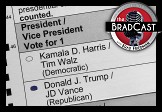 'Bullet Ballot' Claims, Other Arguments for Hand-Counting 2024 Battleground Votes: 'BradCast' 11/19/24
'Bullet Ballot' Claims, Other Arguments for Hand-Counting 2024 Battleground Votes: 'BradCast' 11/19/24 'Green News Report' 11/19/24
'Green News Report' 11/19/24 Trump Already Violating Law (He Signed!) During Transition: 'BradCast' 11/18/24
Trump Already Violating Law (He Signed!) During Transition: 'BradCast' 11/18/24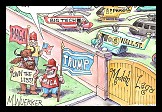 Sunday 'Into the Gaetz of Hell' Toons
Sunday 'Into the Gaetz of Hell' Toons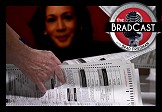 Computer Security Experts Ask Harris to Seek Hand-Counts Due to Voting System Breaches: 'BradCast' 11/14/24
Computer Security Experts Ask Harris to Seek Hand-Counts Due to Voting System Breaches: 'BradCast' 11/14/24  'Green News Report' 11/14/24
'Green News Report' 11/14/24 Trump Criminal Cases Fade After Election as GOP 'Does Not Believe in Rule of Law': 'BradCast' 11/13/24
Trump Criminal Cases Fade After Election as GOP 'Does Not Believe in Rule of Law': 'BradCast' 11/13/24 Climate Advocates Brace for Fight With Trump 2.0: 'BradCast' 11/12/24
Climate Advocates Brace for Fight With Trump 2.0: 'BradCast' 11/12/24 'Green News Report' 11/12/24
'Green News Report' 11/12/24 Let It All Out: 'BradCast' 11/11/24
Let It All Out: 'BradCast' 11/11/24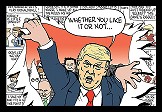 Sunday 'Like it or Not' Toons
Sunday 'Like it or Not' Toons Not All Bad: Abortion Rights Won Big (Almost) Everywhere: 'BradCast' 11/7/24
Not All Bad: Abortion Rights Won Big (Almost) Everywhere: 'BradCast' 11/7/24 'Green News Report' 11/7/24
'Green News Report' 11/7/24 U.S. CHOOSES CONVICTED CRIMINAL, ADJUDICATED RAPIST: 'BradCast' 11/6/24
U.S. CHOOSES CONVICTED CRIMINAL, ADJUDICATED RAPIST: 'BradCast' 11/6/24 ELECTION DAY 2024: Tea Leaves, Probs for Voters, What's Next: 'BradCast' 11/5/24
ELECTION DAY 2024: Tea Leaves, Probs for Voters, What's Next: 'BradCast' 11/5/24 'Closing Arguments' for Undecideds, Third-Party Voters: 'BradCast' 11/4/24
'Closing Arguments' for Undecideds, Third-Party Voters: 'BradCast' 11/4/24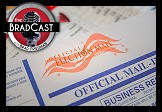 The GOP 'Voter Fraud' Before the Storm: 'BradCast' 10/31/24
The GOP 'Voter Fraud' Before the Storm: 'BradCast' 10/31/24 'Closing Arguments'with Digby and Driftglass: 'BradCast' 10/30/24
'Closing Arguments'with Digby and Driftglass: 'BradCast' 10/30/24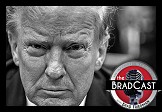 Trump Promises to be a Lawless, Authoritarian President. Believe Him: 'BradCast' 10/29/24
Trump Promises to be a Lawless, Authoritarian President. Believe Him: 'BradCast' 10/29/24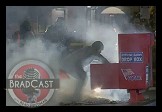 Ballots Burn, Billion-aires 'Obey in Advance', Callers Ring In: 'BradCast' 10/28/24
Ballots Burn, Billion-aires 'Obey in Advance', Callers Ring In: 'BradCast' 10/28/24 Musk's Privatized Internet Satellite System Threatens U.S. National Security
Musk's Privatized Internet Satellite System Threatens U.S. National Security
 VA GOP VOTER REG FRAUDSTER OFF HOOK
VA GOP VOTER REG FRAUDSTER OFF HOOK Criminal GOP Voter Registration Fraud Probe Expanding in VA
Criminal GOP Voter Registration Fraud Probe Expanding in VA DOJ PROBE SOUGHT AFTER VA ARREST
DOJ PROBE SOUGHT AFTER VA ARREST Arrest in VA: GOP Voter Reg Scandal Widens
Arrest in VA: GOP Voter Reg Scandal Widens ALL TOGETHER: ROVE, SPROUL, KOCHS, RNC
ALL TOGETHER: ROVE, SPROUL, KOCHS, RNC LATimes: RNC's 'Fired' Sproul Working for Repubs in 'as Many as 30 States'
LATimes: RNC's 'Fired' Sproul Working for Repubs in 'as Many as 30 States' 'Fired' Sproul Group 'Cloned', Still Working for Republicans in At Least 10 States
'Fired' Sproul Group 'Cloned', Still Working for Republicans in At Least 10 States FINALLY: FOX ON GOP REG FRAUD SCANDAL
FINALLY: FOX ON GOP REG FRAUD SCANDAL COLORADO FOLLOWS FLORIDA WITH GOP CRIMINAL INVESTIGATION
COLORADO FOLLOWS FLORIDA WITH GOP CRIMINAL INVESTIGATION CRIMINAL PROBE LAUNCHED INTO GOP VOTER REGISTRATION FRAUD SCANDAL IN FL
CRIMINAL PROBE LAUNCHED INTO GOP VOTER REGISTRATION FRAUD SCANDAL IN FL Brad Breaks PA Photo ID & GOP Registration Fraud Scandal News on Hartmann TV
Brad Breaks PA Photo ID & GOP Registration Fraud Scandal News on Hartmann TV  CAUGHT ON TAPE: COORDINATED NATIONWIDE GOP VOTER REG SCAM
CAUGHT ON TAPE: COORDINATED NATIONWIDE GOP VOTER REG SCAM CRIMINAL ELECTION FRAUD COMPLAINT FILED AGAINST GOP 'FRAUD' FIRM
CRIMINAL ELECTION FRAUD COMPLAINT FILED AGAINST GOP 'FRAUD' FIRM RICK SCOTT GETS ROLLED IN GOP REGISTRATION FRAUD SCANDAL
RICK SCOTT GETS ROLLED IN GOP REGISTRATION FRAUD SCANDAL VIDEO: Brad Breaks GOP Reg Fraud Scandal on Hartmann TV
VIDEO: Brad Breaks GOP Reg Fraud Scandal on Hartmann TV RNC FIRES NATIONAL VOTER REGISTRATION FIRM FOR FRAUD
RNC FIRES NATIONAL VOTER REGISTRATION FIRM FOR FRAUD EXCLUSIVE: Intvw w/ FL Official Who First Discovered GOP Reg Fraud
EXCLUSIVE: Intvw w/ FL Official Who First Discovered GOP Reg Fraud GOP REGISTRATION FRAUD FOUND IN FL
GOP REGISTRATION FRAUD FOUND IN FL


































